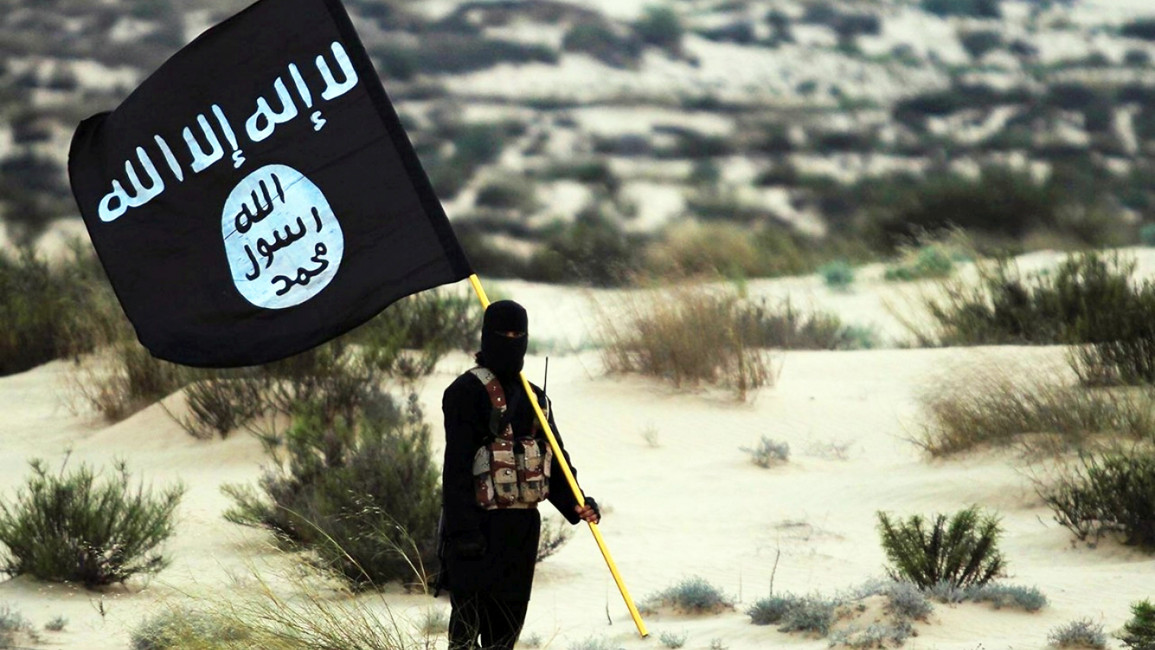IS cells in northeast Syria have 'centralised' weapons supplies: report
The so-called Islamic State (IS) in northeast Syria maintains access to a centralised and coordinated weapons supply despite their loss of territorial control, a report by Conflict Armament Research (CAR) revealed on Monday, 29 January.
The report by the weapons monitor analysed 271 weapons and 13,000 pieces of ammunition seized by the Kurdish-led Syrian Democratic Forces (SDF) during three raids on IS cells in northeast Syria in 2021 and 2022.
IS controlled a wide swath of land in Iraq and Syria from 2014 to 2019 before US-led global coalition forces alongside local partners degraded the group's ability to control territory in March 2019 and forced it underground.
Despite the defeat of the group's so-called caliphate in 2019, IS maintains a centralised distribution network for weapons in Syria. This network is deployed to equip high-level IS cells so that they can carry out attacks.
"Key similarities across the materiel seized from these cells strongly suggested that they were closely linked and supported by a centralised distribution network," the report said.
Since the group's territorial defeat, IS has carried out hundreds of attacks in Iraq and Syria through latent sleeper cells.
One of the most prominent of these attacks was an attempt to spring thousands of their comrades from the Sina prison in northeast Syria in January 2022, resulting in a ten-day battle between IS militants and Coalition forces.
The stockpiles used by the group come from three sources: Weapons gathered during the time of the 'caliphate', weapons bought or sourced from other groups in Syria and materials produced by the group itself.
Weapons found during the three raids on IS cells were primarily from the Cold War era, with several Chinese and North Korean rifles found, which were most likely supplied to the Syrian regime before falling into the hands of IS.
Some weapons were covered in plastic and greased for long-term underground storage. In one seizure of weapons, a large quantity of materials was discovered buried in plastic barrels underground.
IS reportedly buried portions of its weapons cache underground in the central desert of Syria before its territorial defeat for future use.
"This assessment underscores the longevity of materiel supplied to armed opposition groups since 2012 and as far back as 2003, providing a stark reminder that such equipment can find its way to terrorist actors, thereby fuelling further insecurity and cycles of violence," the CAR report said.
Other weapons had been produced after 2017 and 2018 and were most likely supplied to the Turkish-backed Syrian National Army (SNA) before ending up in the hands of IS.
It is unclear how the weapons would have been diverted from the SNA to IS, but weapons – including the US and Saudi Arabian-supplied arms – given to other Syrian opposition groups have been used by IS in the past.
Materials also came via Lebanon and Turkey after being imported by private companies in those countries.
IS also has the capacity to produce its own materials, including components of improvised explosive devices and silencers.
Coalition forces, alongside local partners in Iraq and Syria, continue to carry out missions to root out and defeat the extremist group.

![Trump's warm greeting to Netanyahu contrasted with Kamala Harris's critical reception [Getty]](/sites/default/files/styles/image_330x185/public/2024-07/GettyImages-2162908988.jpg?h=69f2b9d0&itok=OLc5dL88)
![The brutal assault on Khan Younis has killed dozens and displaced thousands more [Getty]](/sites/default/files/styles/image_330x185/public/2024-07/GettyImages-2162526709.jpg?h=d3eda8cf&itok=n5N-o8p5)
![Members of the Algerian delegation threw roses into the Seine [Getty]](/sites/default/files/styles/image_330x185/public/2024-07/GettyImages-2162980872.jpg?h=199d8c1f&itok=h_3o_TOL)